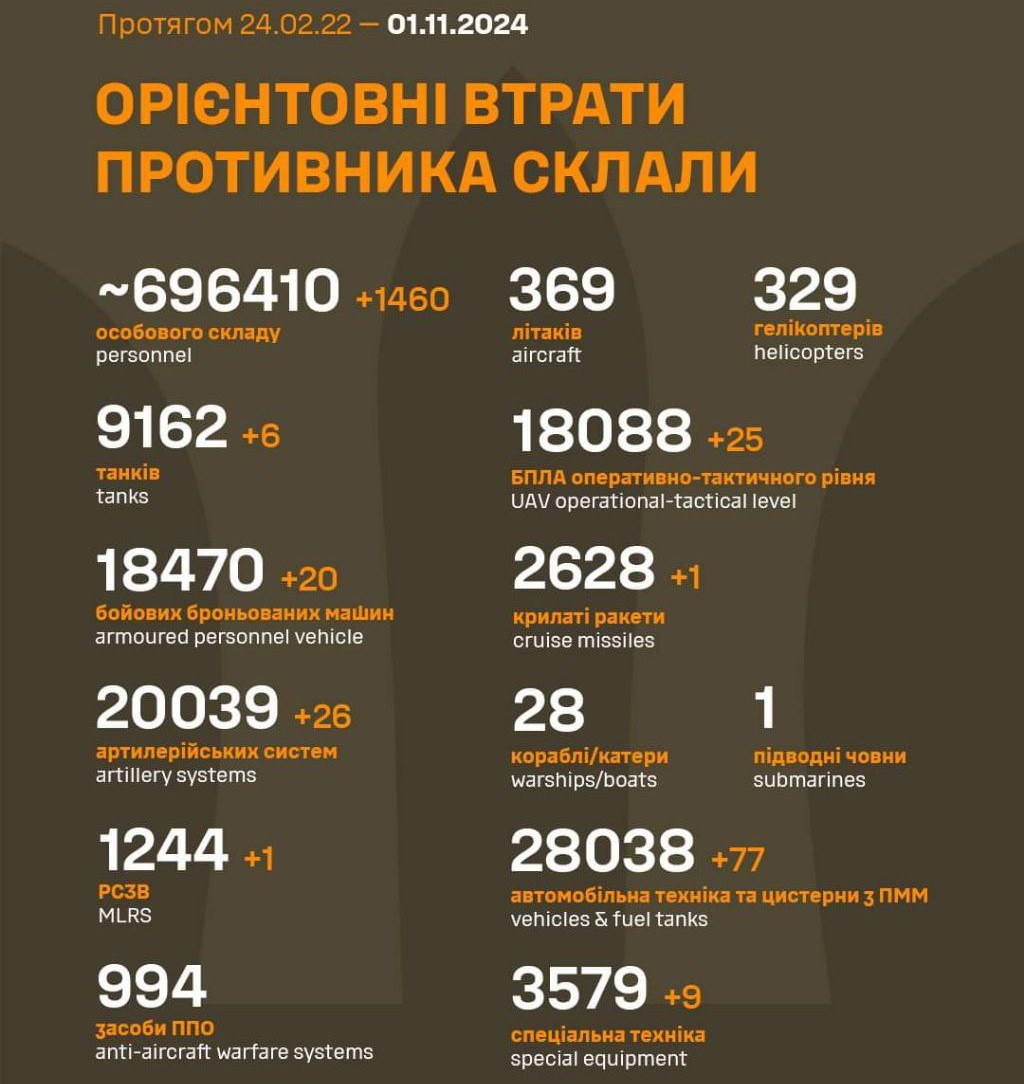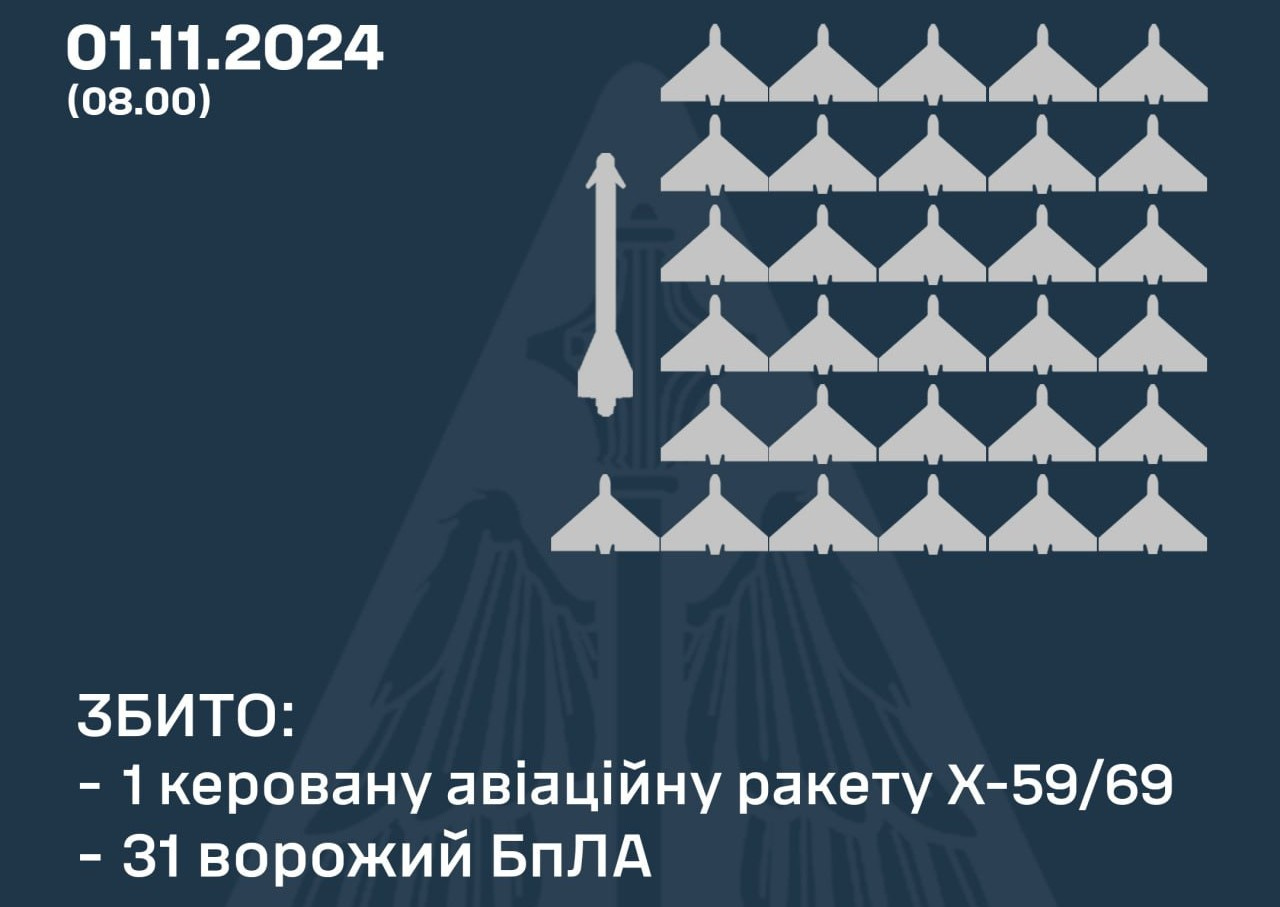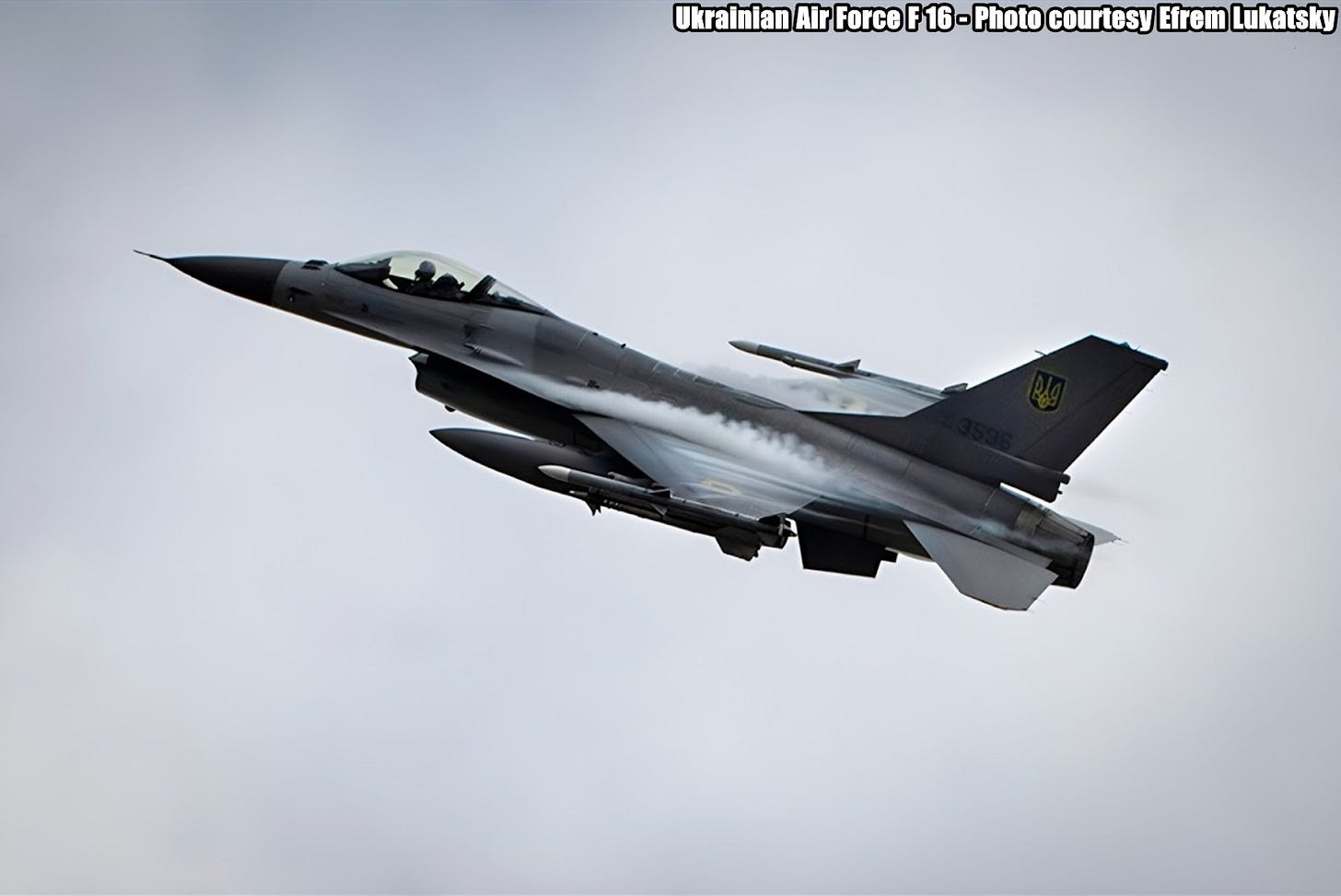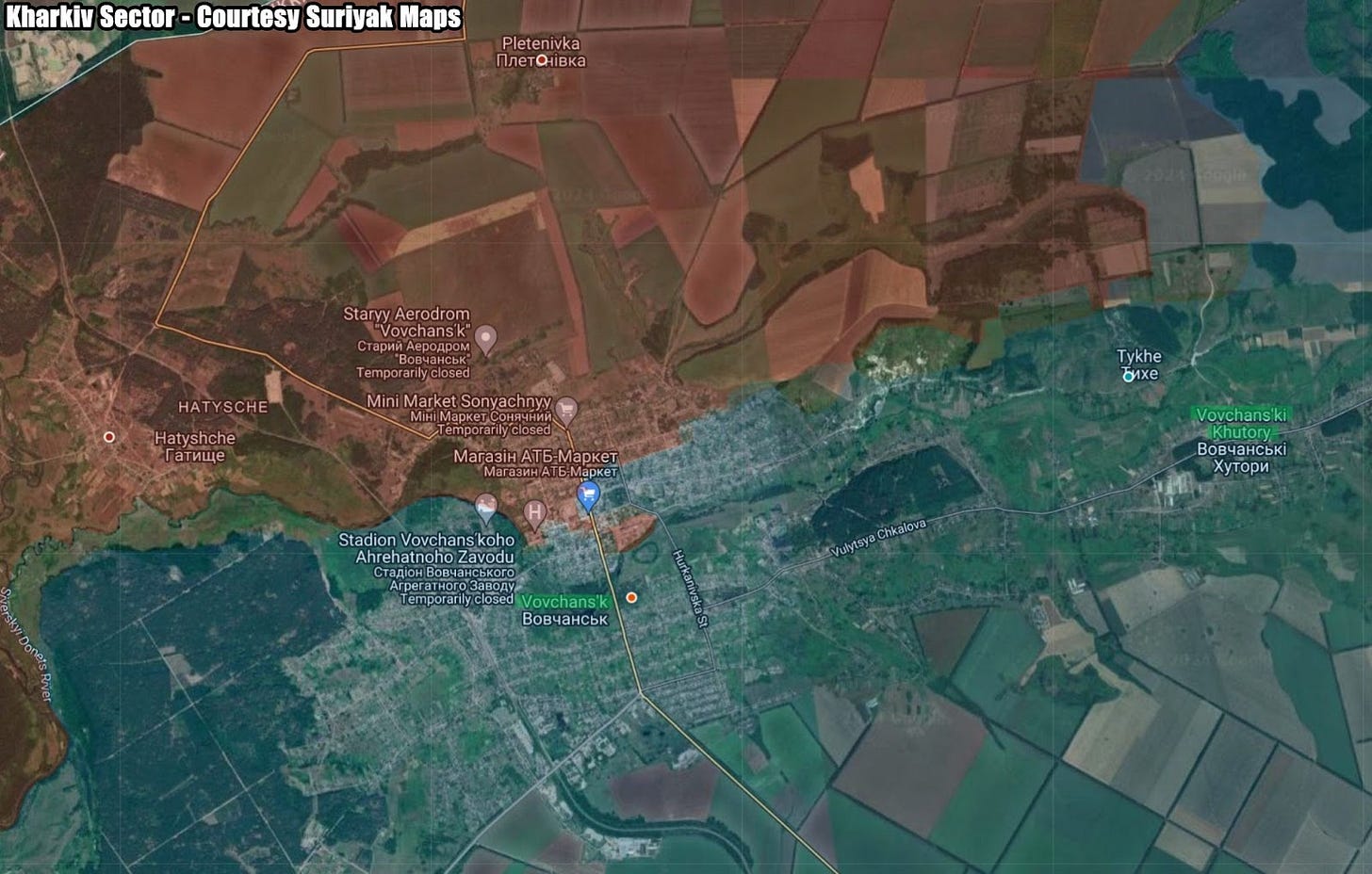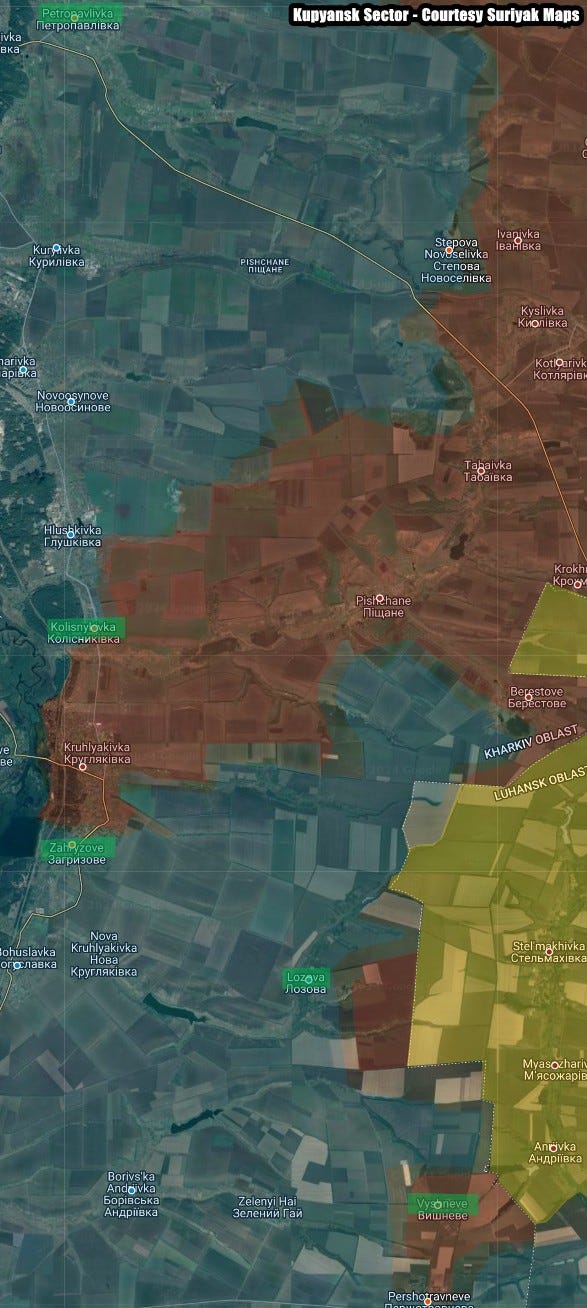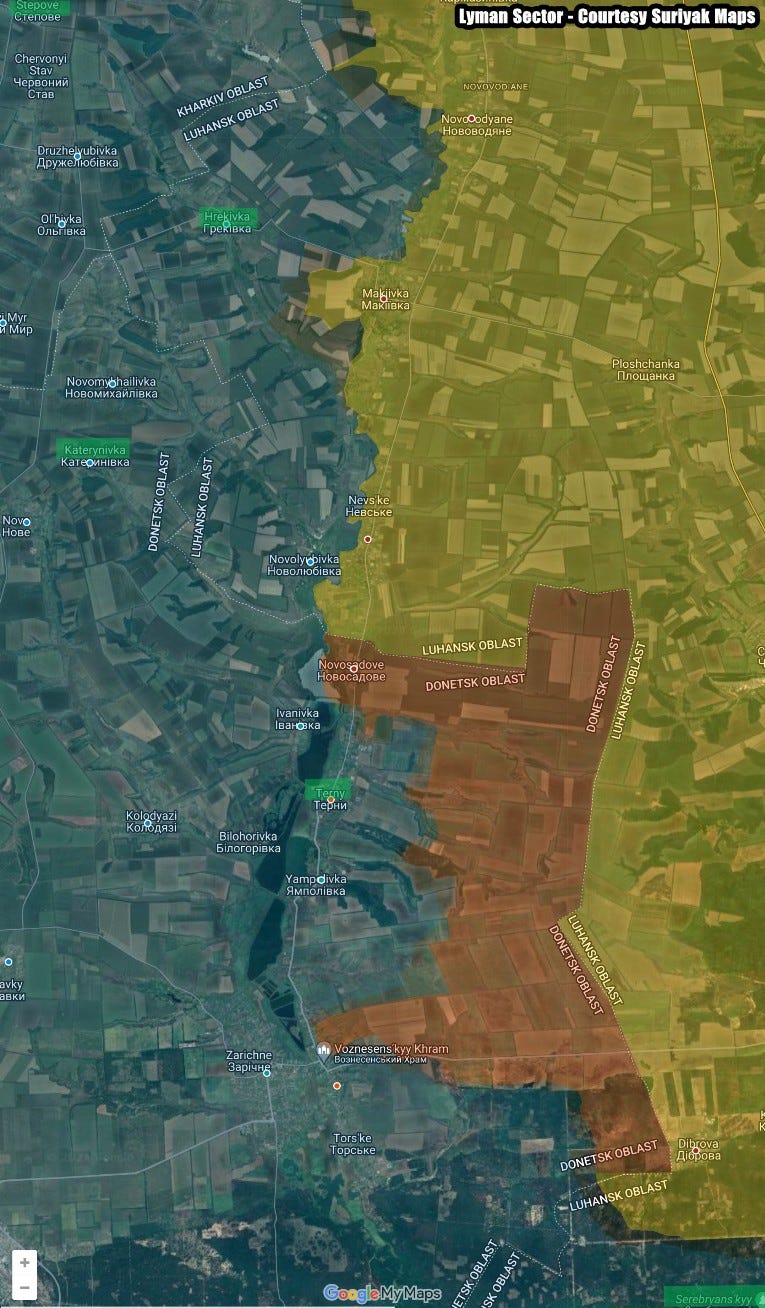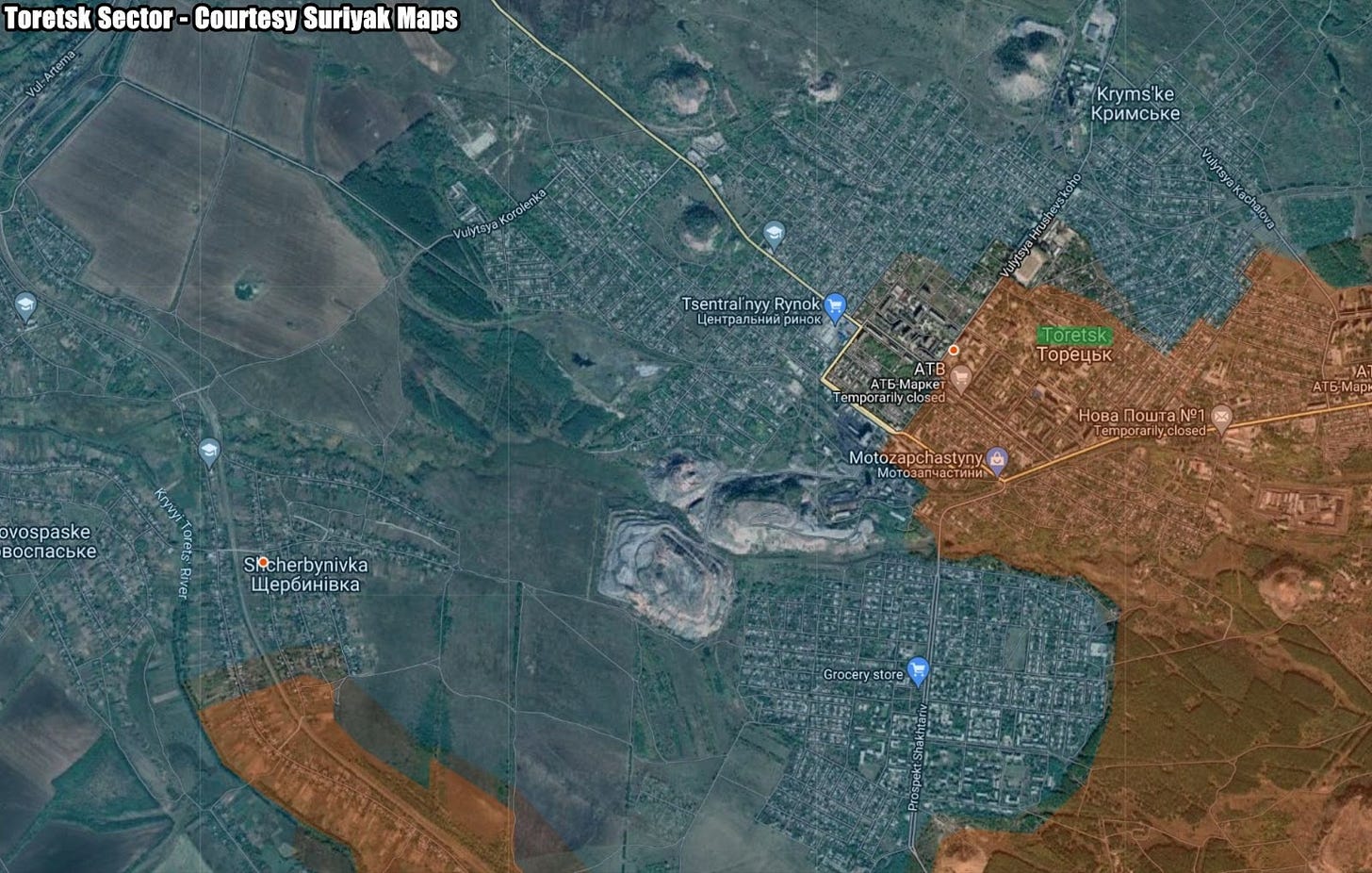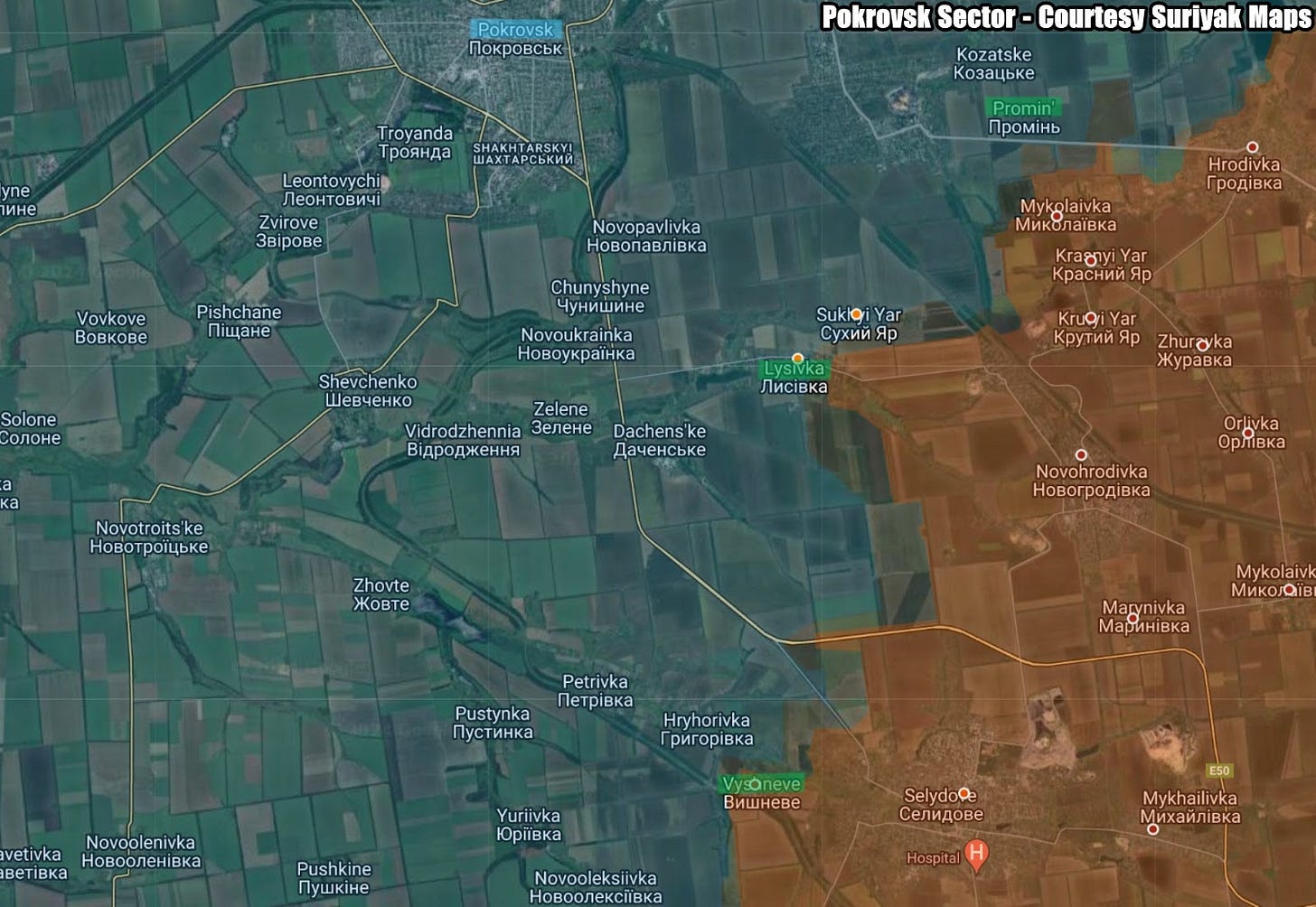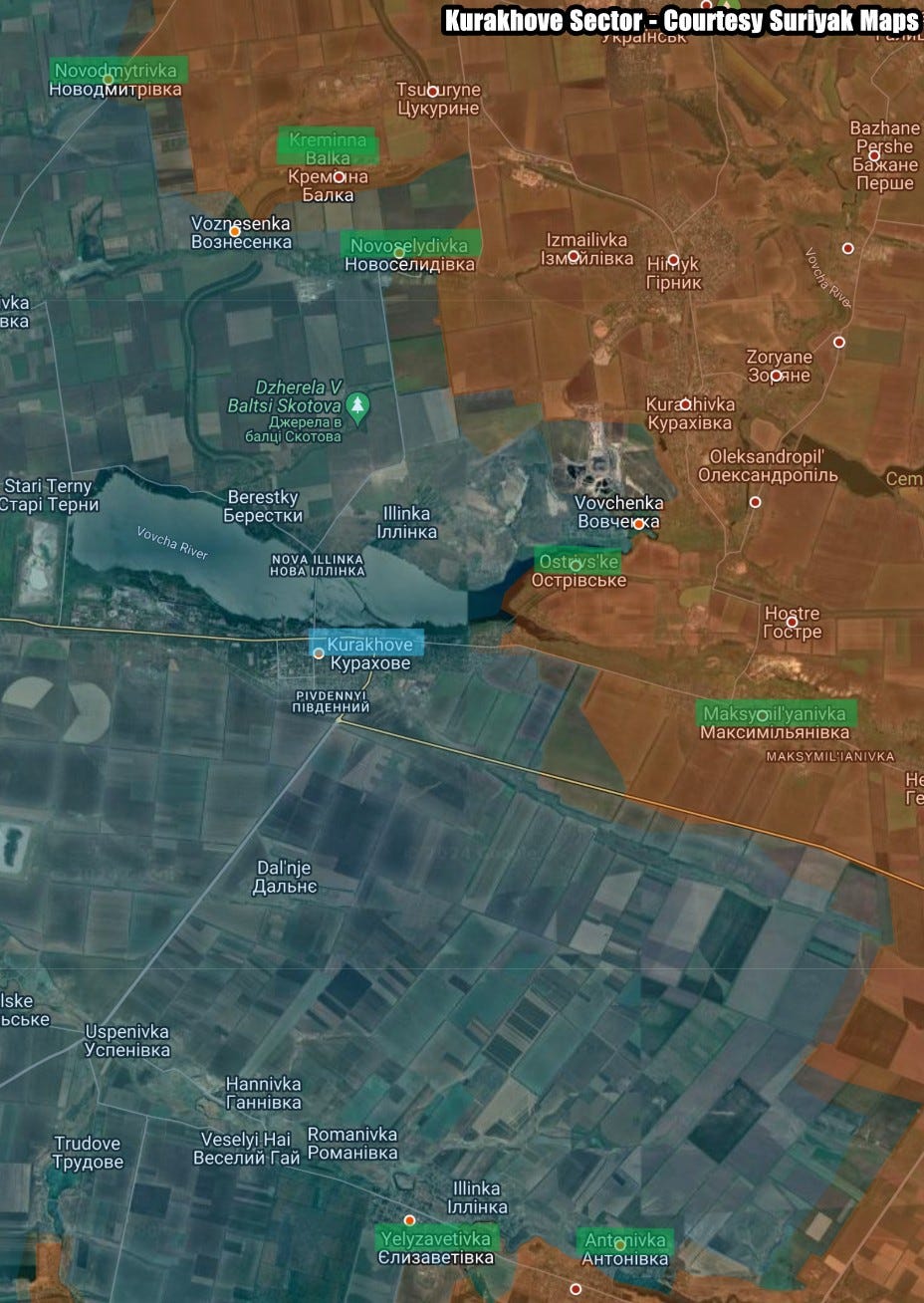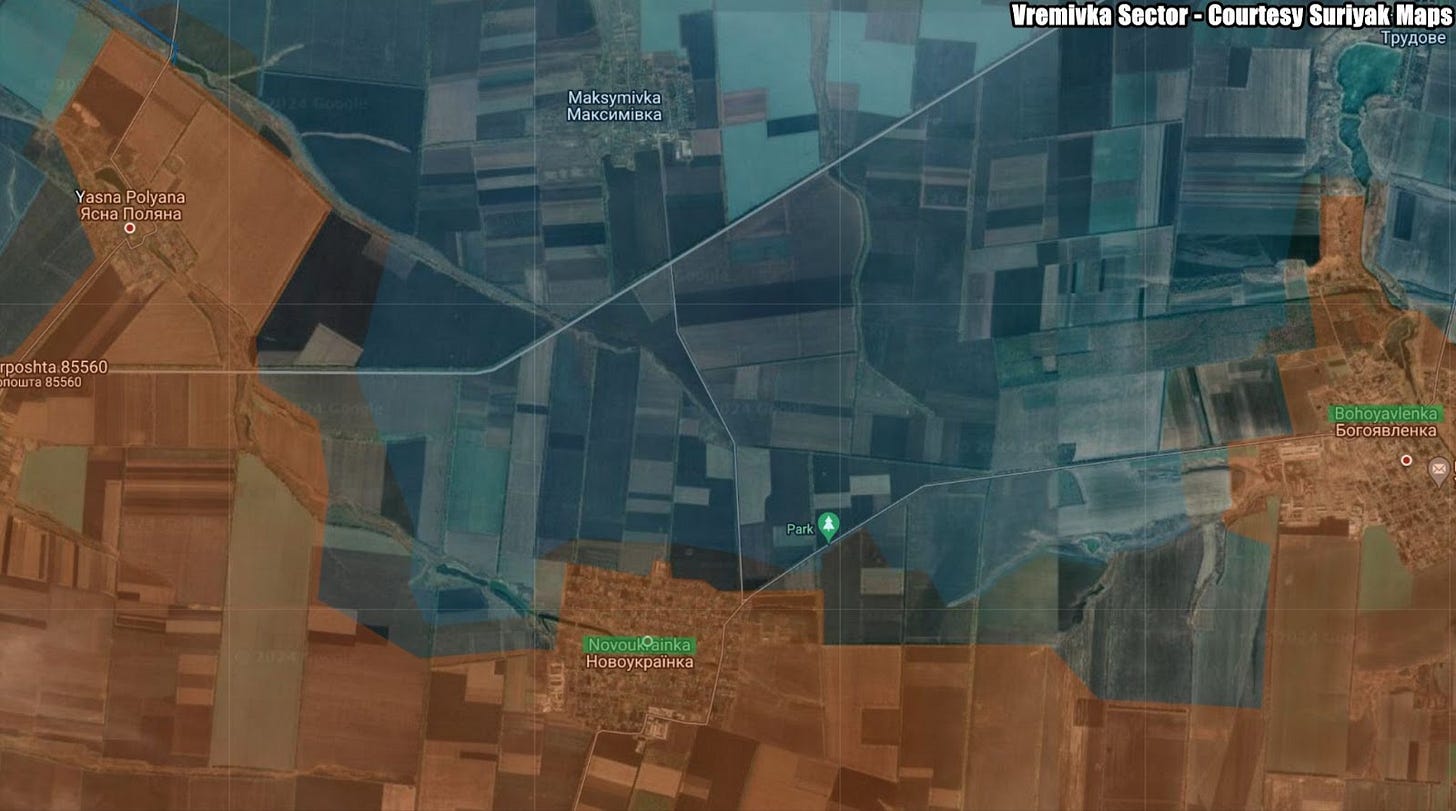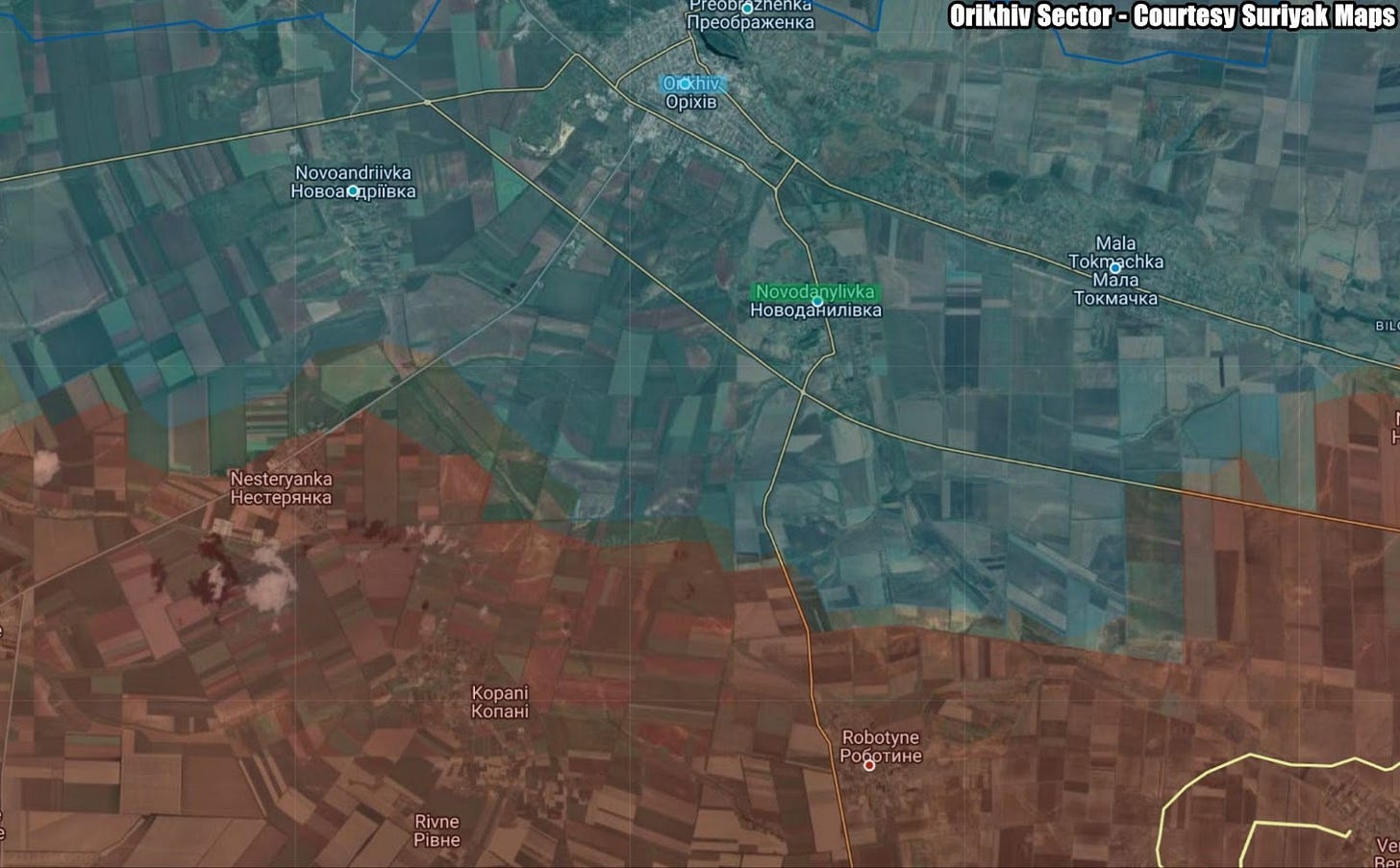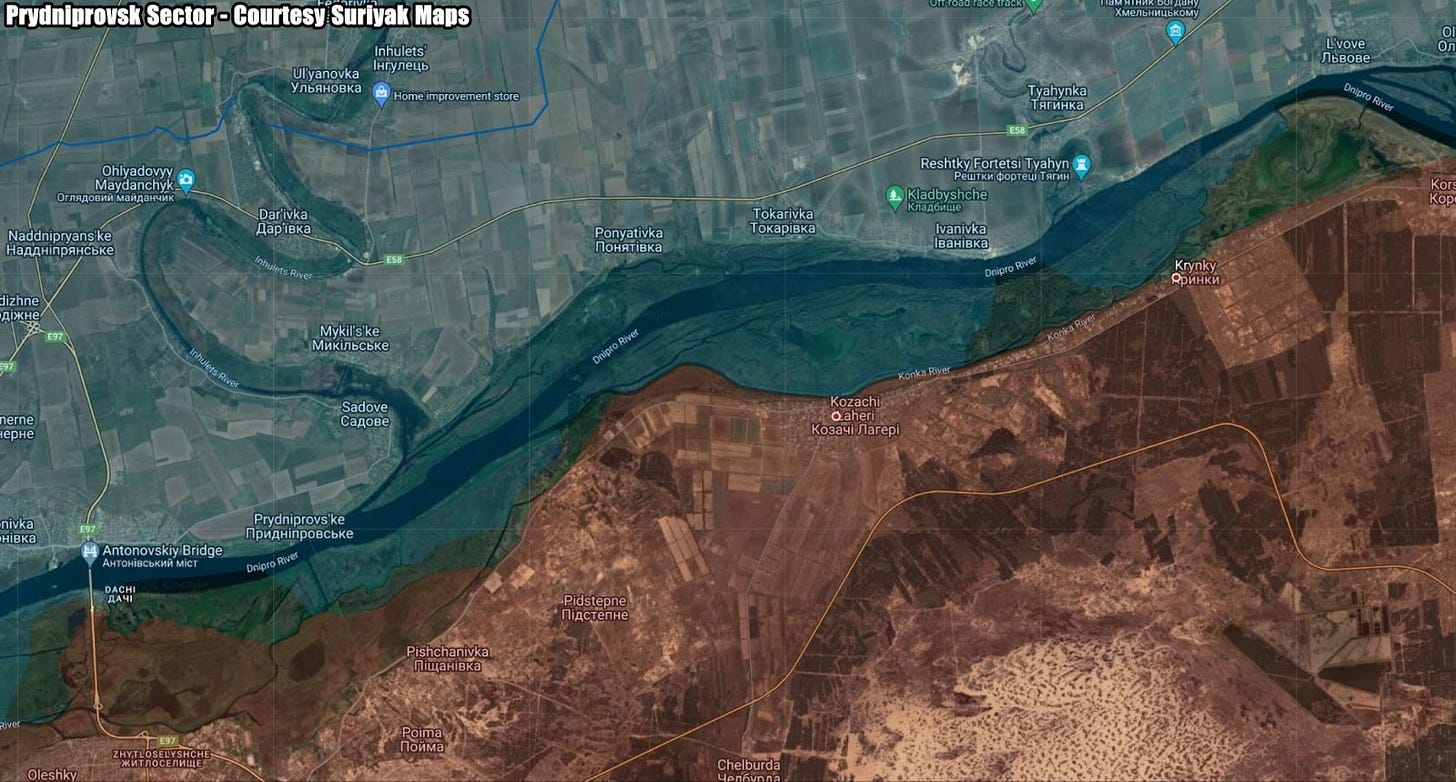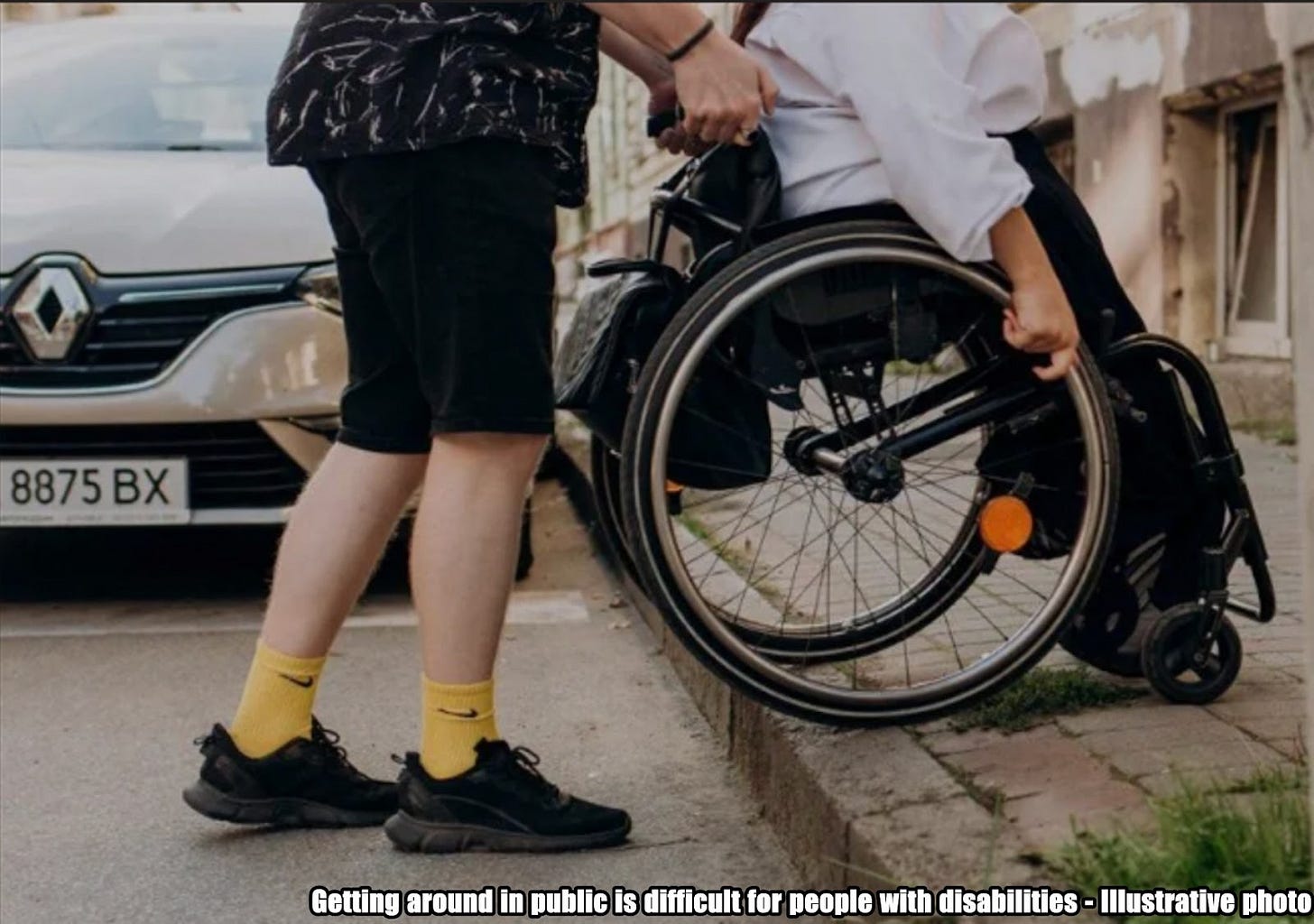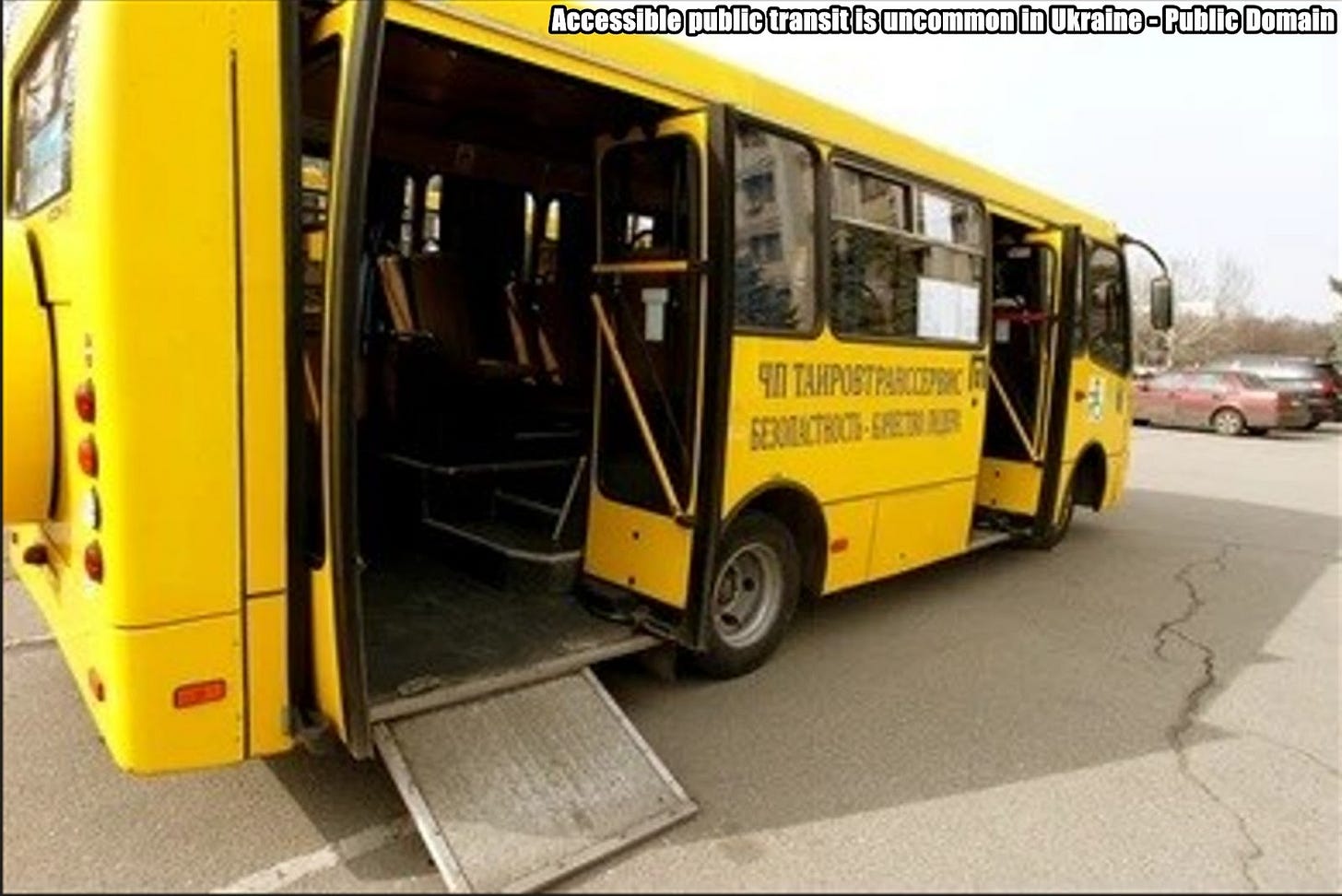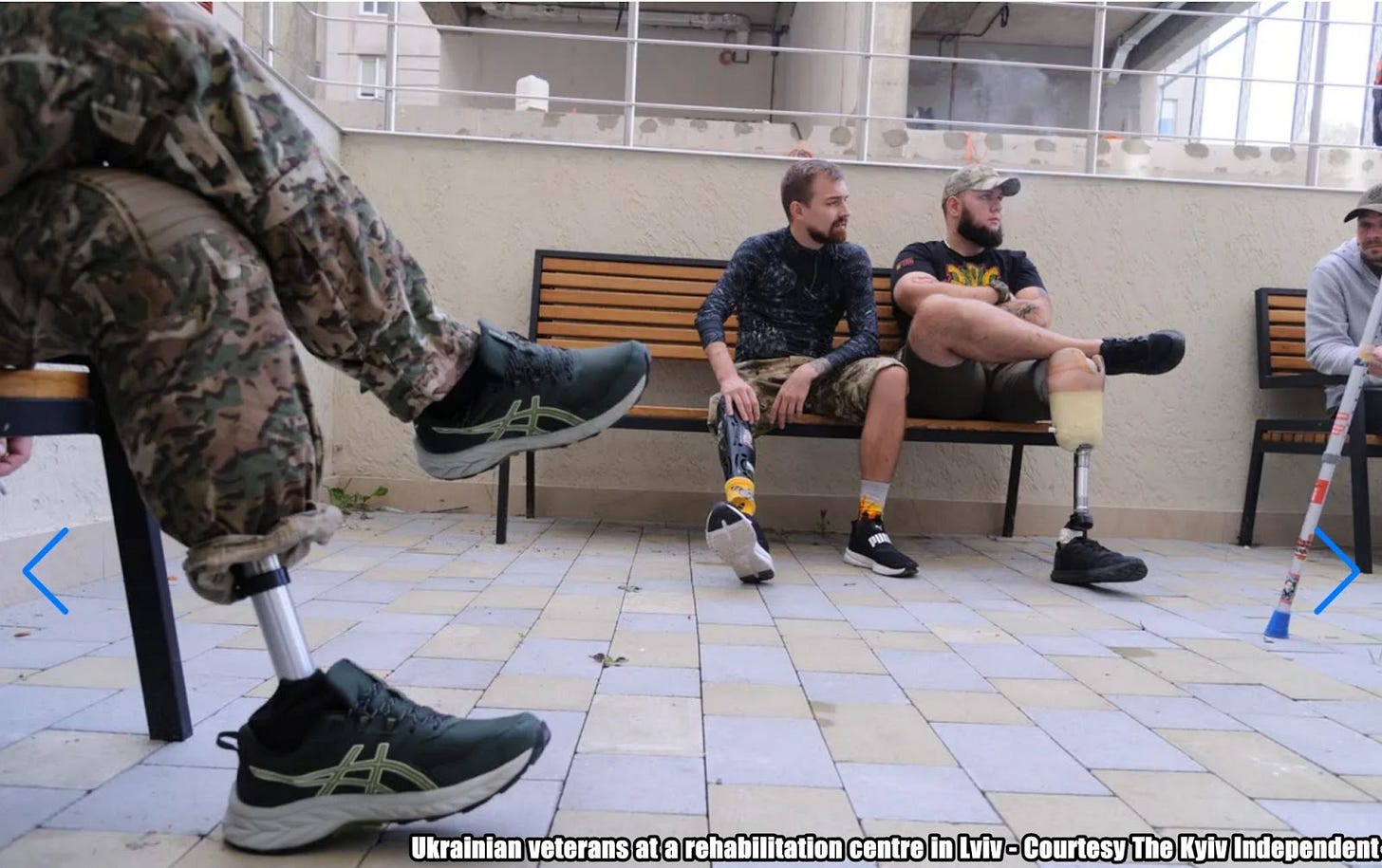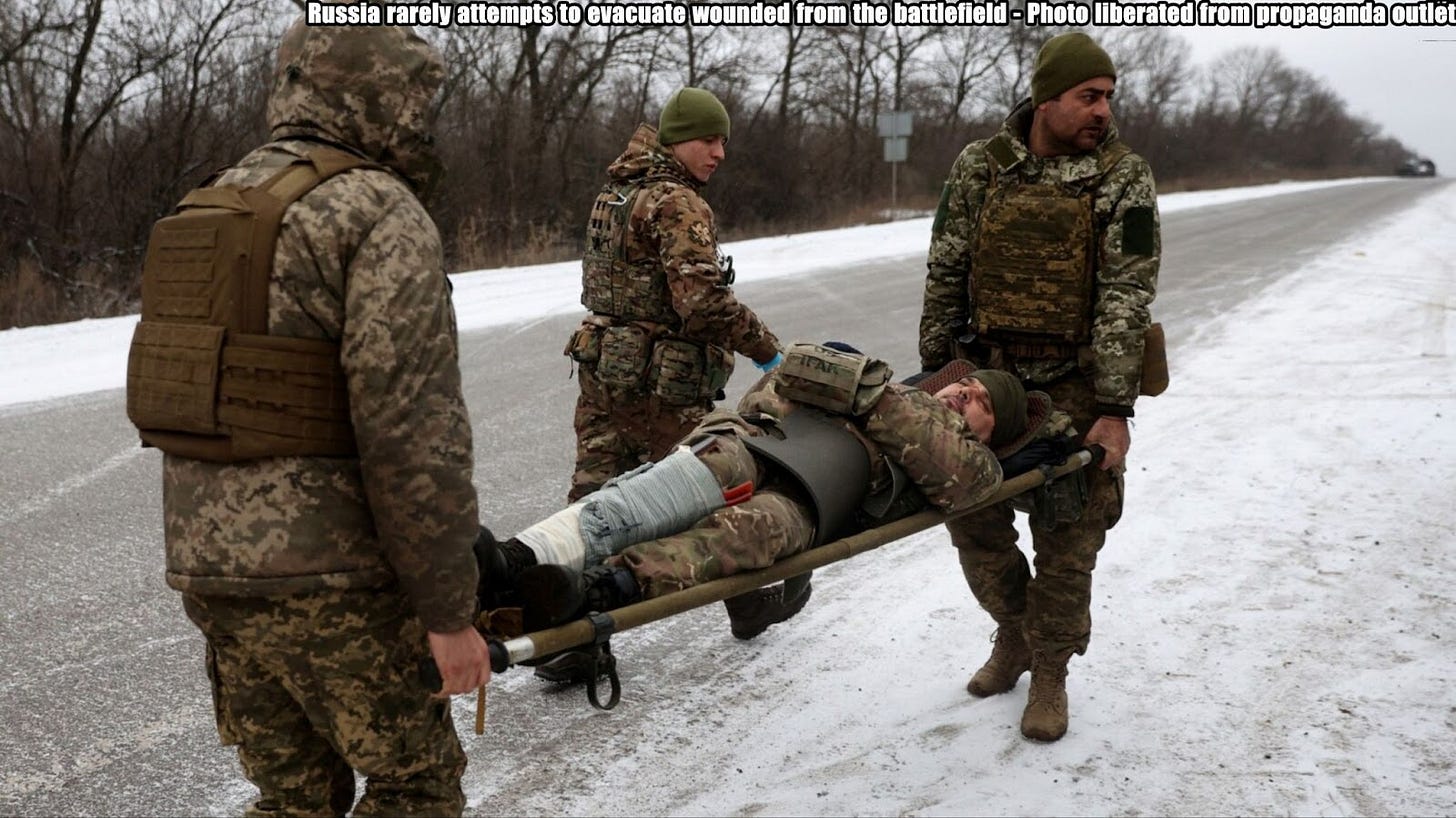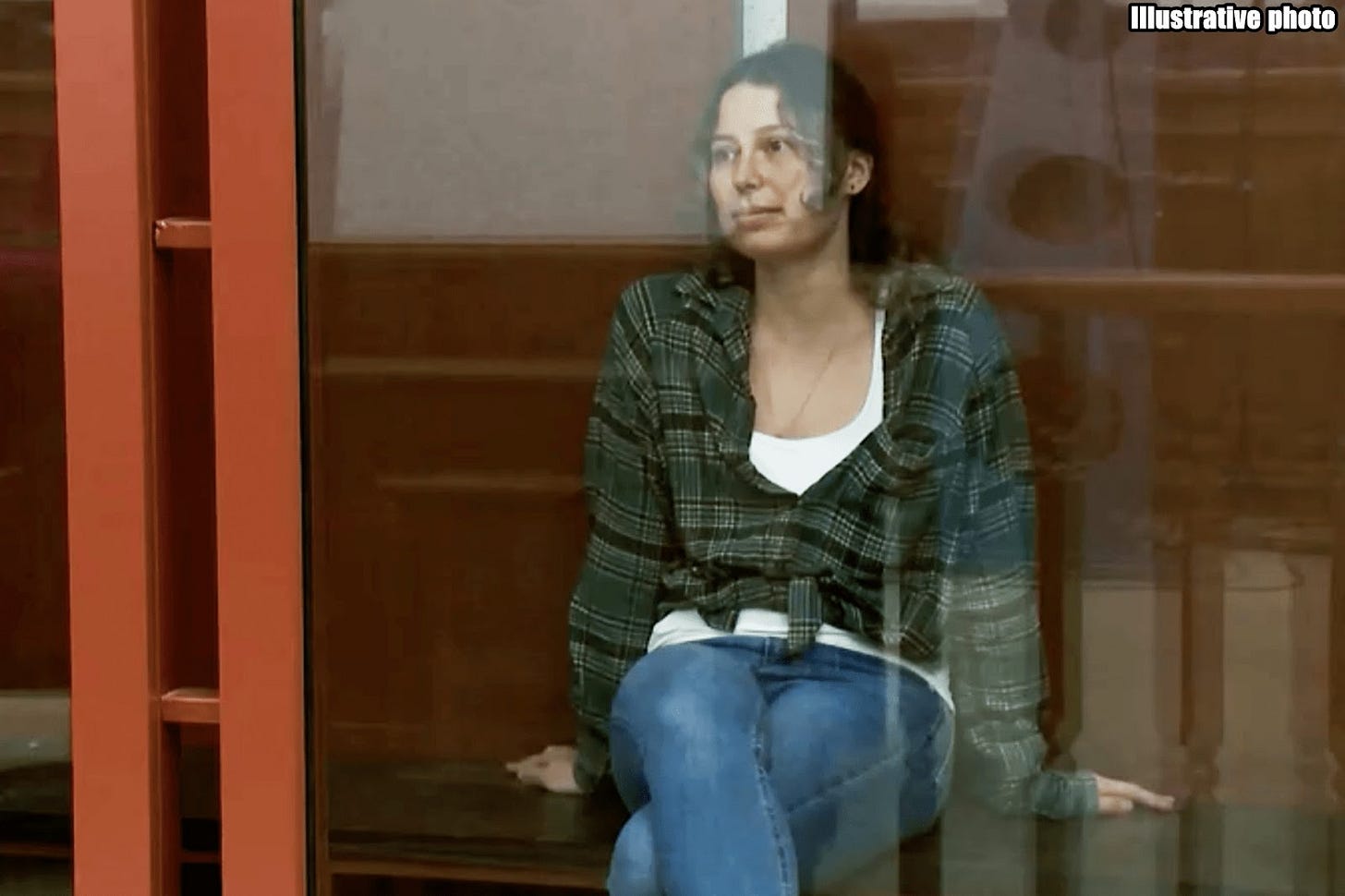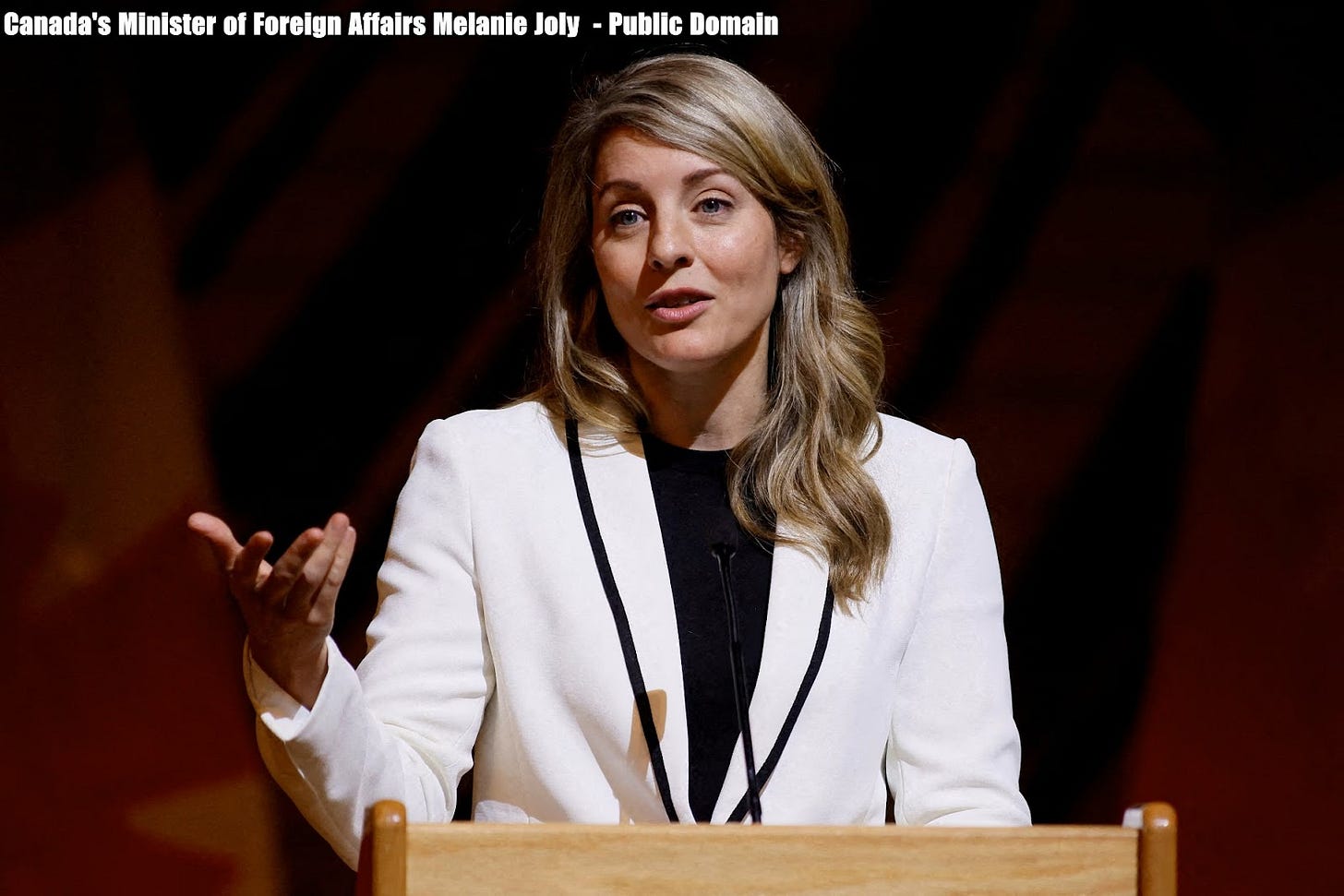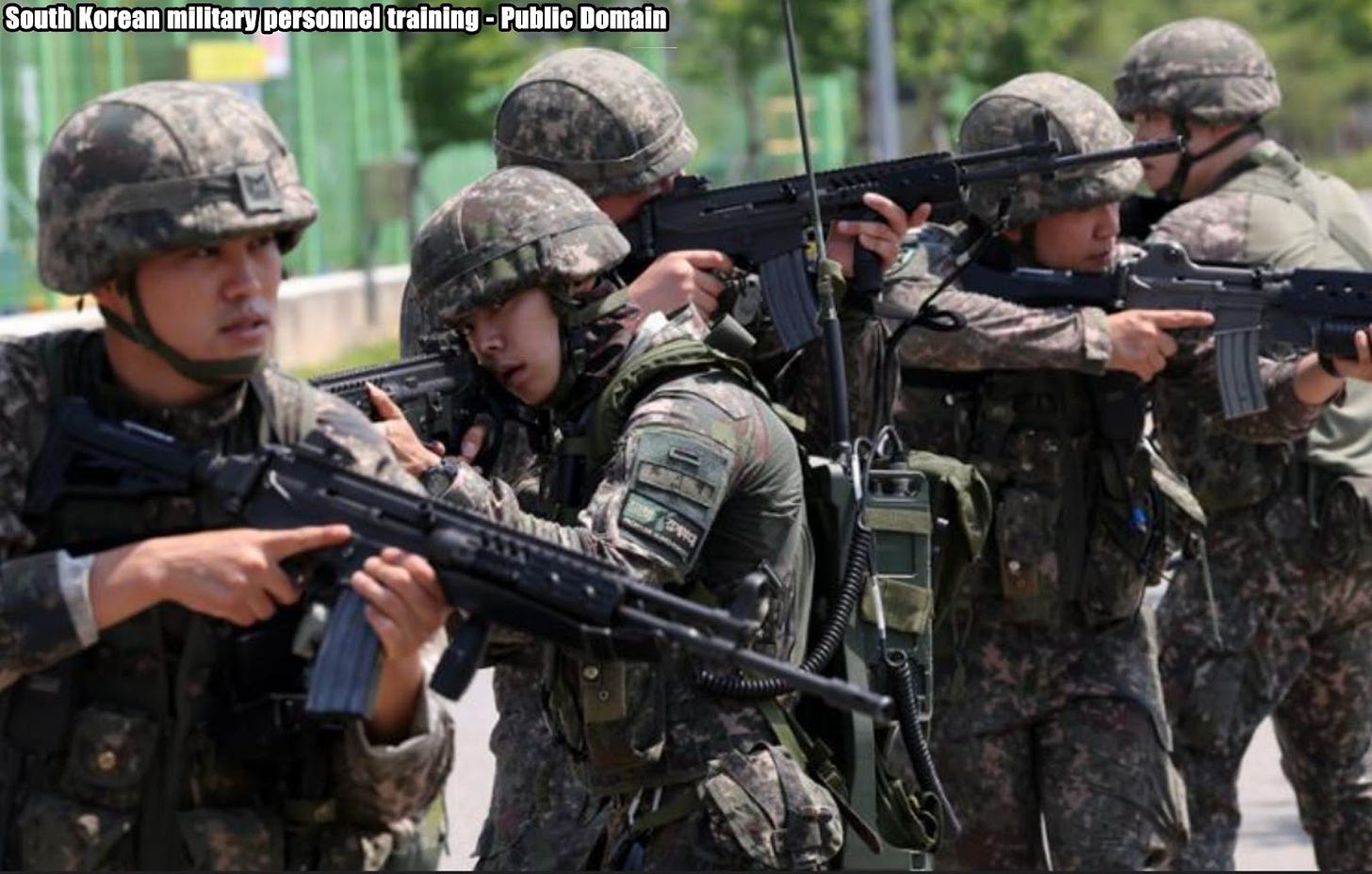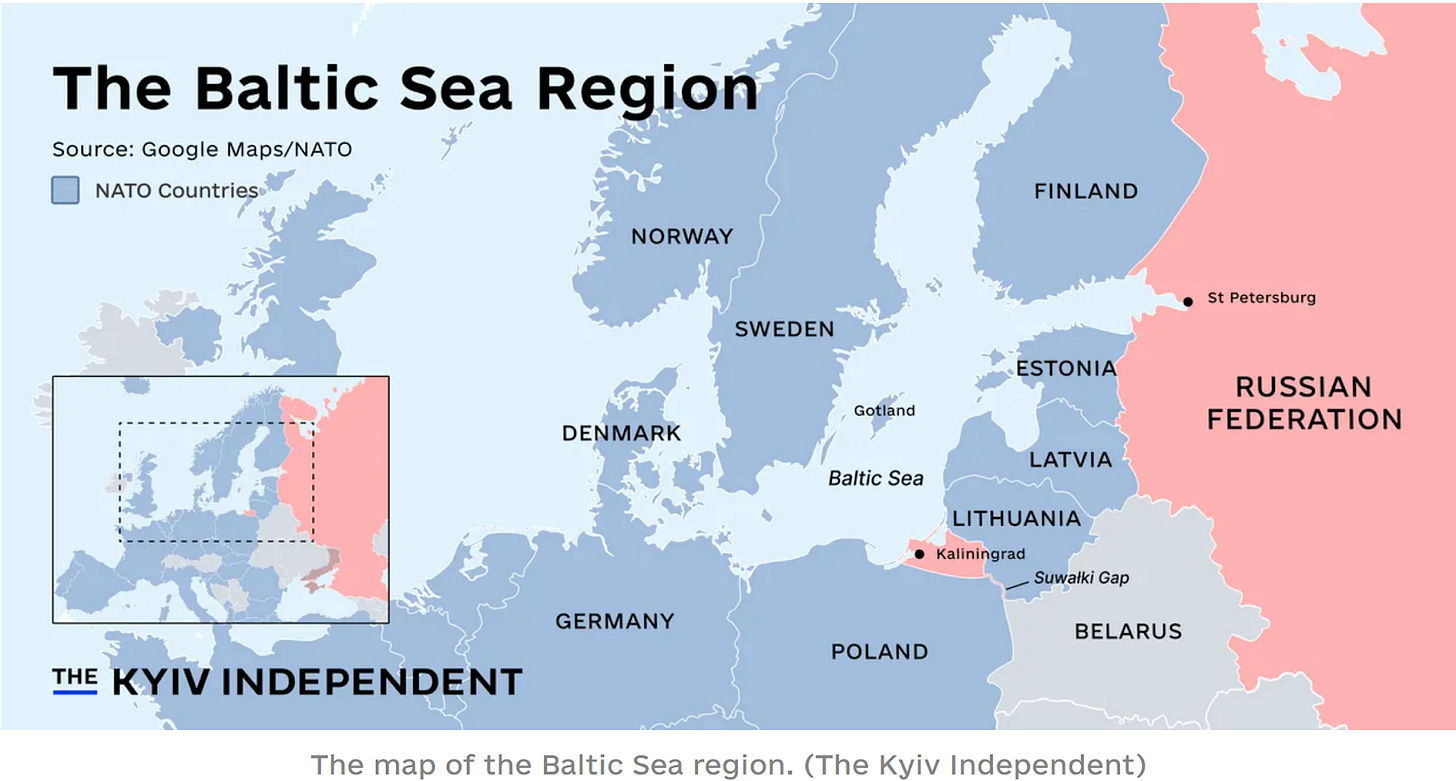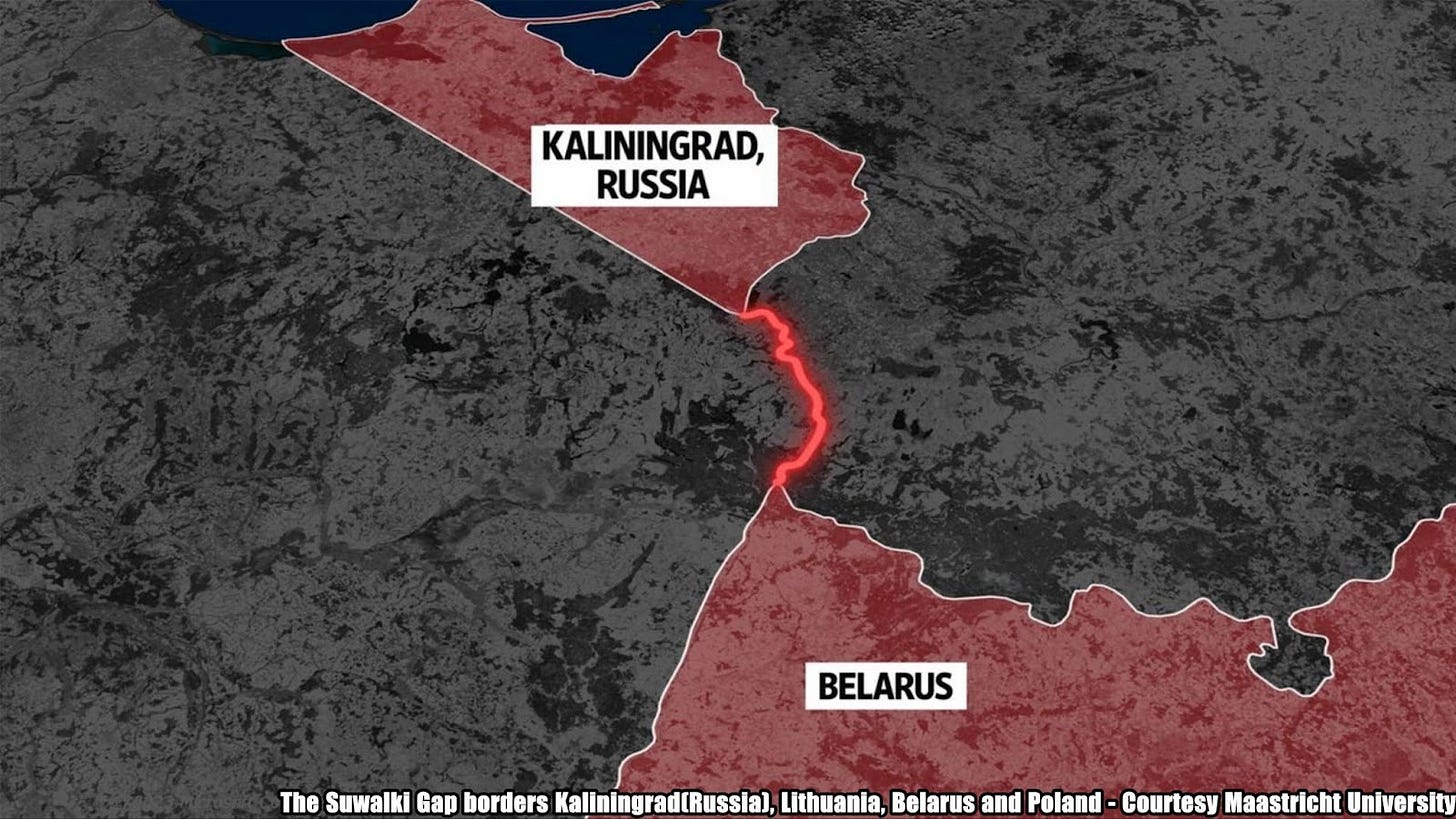Slava Ukraini! In early 2022 I began a Telegram channel aggregating news from a number of sources daily on the war in Ukraine. In June 2023 I began providing a daily draft for the Ukraine War Brief Podcast collecting news from over 70 sources daily, much of which formed the basis of the script. While the Podcast no longer exists I have continued to make this Brief available both on my own Substack and The People’s Media for those who wish to keep up with events on a daily basis.
All the latest news on the Russo-Ukraine War 6 days per week
ALONG THE CONTACT LINE
GSAFU Morning Report
The General Staff of the Armed Forces of Ukraine in its Operational Information update at 22:00 on Oct 31 stated that day 972 of the full-scale invasion of the Russian Federation against Ukraine was about to begin.
During the past day, 150 combat engagements took place. Over the past 24 hours, the enemy carried out 2 missile strikes, 35 air strikes, 490 drone strikes and more 2,600 than artillery strikes across the positions of Ukrainian forces.
At the same time, Ukrainian soldiers continue to inflict losses in manpower and equipment on the occupying troops, exhausting the enemy along the entire front line and continue to disrupt the plans of Russian occupiers to advance deep into the territory of Ukraine.
Air Force Daily Report
On the night of Nov 1, 2024 (from 6:00 p.m. on Oct 31), the enemy attacked with three Kh-59/69 guided air missiles from the airspace of the TOT of the Kherson region, and also attacked 48 attack UAVs of the "Shahed" type and unmanned aerial vehicles of an unknown type from the directions of Orel, Kursk - Russian Federation. The enemy's tactical aircraft struck the Kharkiv Oblast, Sumy Oblast, and Zaporizhzhia with guided air bombs.
The air attack was repulsed by anti-aircraft missile troops, aviation, electronic warfare units and mobile fire groups of the Air Force and the Defense Forces of Ukraine.
As of 08:00, 31 enemy UAVs were confirmed shot down, 14 UAVs were lost in location, three UAVs flew in the direction of Belarus. Air defense also managed to shoot down one Kh-59/69 guided air missile, the rest, due to active countermeasures, did not reach their targets.
Anti-aircraft defense worked in Kirovohrad, Kyiv, Cherkasy, Vinnytsia, Zhytomyr, Khmelnytskyi, Sumy, Chernihiv, Odesa and Poltava regions.
According to preliminary results, there were no victims. However, as a result of the Russian missile-drone attack, due to falling debris, several civilian enterprises were damaged, as well as apartment buildings and private houses in Poltava region, Cherkasy region, Kyiv region, and Odesa region.
Ukrainian F-16 reportedly shoots down second Russian Su-34
Russian sources close to the Air Force, including well-known aviator Ilya Tumanov, have acknowledged the loss, with messages such as “Eternal memory, brothers!” indicating that the aircraft’s crew did not survive. Defence Blog reports.
This incident marks the second recent loss of a Russian Su-34, following an alleged shootdown by a Ukrainian F-16 on October 12 under similar circumstances. Although there has been no official confirmation or denial from either Russia or Ukraine regarding the nature of today’s incident, some sources are attributing the latest downing to an engagement with a Ukrainian F-16.
The reports suggest that Ukrainian fighter jets may be increasingly asserting their presence in contested airspace as the conflict escalates.
The Su-34, a highly advanced Russian fighter-bomber, is a valuable asset in Russia’s aerial operations.
Neither Ukrainian nor Russian official statements have confirmed details about the incident, leaving room for speculation. Analysts suggest that the lack of immediate comment may reflect sensitivities surrounding losses of advanced aircraft or the increasing effectiveness of Ukrainian fighter jets.
The reported loss adds to a series of setbacks for Russia’s air force, which has seen an uptick in downed aircraft and crew casualties.
The Russian Border Incursion
The Institute for the Study of War (ISW), a US based think tank, in its Oct 31 Russian Offensive Campaign Assessment reported that Russian forces recently launched two mechanized counterattacks that resulted in marginal confirmed gains in the Ukrainian salient in Kursk Oblast. Geolocated footage published on Oct 30 showed Ukrainian forces repelling a Russian platoon-sized mechanized assault west of Pogrebki (northwest of Sudzha), indicating that Russian forces recently marginally advanced in the area.
Additional geolocated footage published on October 31 showed that elements of the Russian 83rd Separate Airborne (VDV) Brigade and the 155th Naval Infantry Brigade (Pacific Fleet, Eastern Military District [EMD]) launched a counterattack east of Lyubimovka (southeast of Korenevo) and marginally advanced in the area. One Russian milblogger claimed that elements of the Russian 137th VDV Regiment (106th VDV Division) seized Lyubimovka, but other milbloggers claimed that battles are continuing in the area and that Ukrainian forces maintain limited positions near Lyubimovka and south of Olgovka (east of Korenevo).
Russian and Ukrainian forces continued combat engagements west of the Kursk Oblast salient near Novy Put; south of Korenevo near Darino; northeast of Sudzha near Martynovka; southeast of Korenevo near Novoivanovka and Zeleny Shlyakh; and southeast of Sudzha near Plekhovo. Elements of the Russian 106th VDV Division and 56th VDV Regiment (7th VDV Division) are reportedly operating in Glushkovsky Raion (west of the Kursk Oblast salient).
The Khortytsia operational-strategic group
(Responsible for the northeastern part of Ukraine. )
Kharkiv Sector: Over the last day Ukrainian Defense Forces repelled 3 Russian attacks in the area of Vovchansk and Vovchanski Khutory.
Kupyansk Sector: Russian forces carried out 15 offensive actions in the vicinity of Petropavlivka, Kolisynivka, Zahryzove, Lozova, Vyshneve.
Lyman Sector: Russian forces carried out 21 offensive actions in the vicinity of Stepove, Hrekivka, Katerynivka, Terny, and the Serebryanskyy Forest.
Siversk Sector: There has been no significant change in the combat environment in the last 24 hours.
Kramatorsk Sector: There has been no significant change in the combat environment in the last 24 hours.
Toretsk Sector: Russian forces carried out 3 offensive actions in the vicinity of Toretsk. 1 engagement continues.
The Tavria operational-strategic group
(Responsible for the central-eastern and southeastern part of Ukraine.)
Pokrovsk Sector : Russian forces carried out 23 offensive actions in the vicinity of Promin, Lysivka and Vyshneve. 2 engagements continue.
Kurakhove Sector: Russian forces carried out 56 offensive actions in the vicinity of Novodmytrivka, Kreminna Balka, Novoselydivka, Ostrivske, Maksymilyanivka, Yelyzavetivka and Antonivka. 16 engagements continue.
Vremivka Sector: Russian forces carried out 5 offensive actions in the vicinity of Novoukrainka and Bohoyavlenka.
Orikhiv Sector: Russian forces carried out 2 offensive actions in the vicinity of Novodanylivka
The Odesa operational-strategic group
(Responsible for Kherson, Qırım, (also known as Crimea) and the Black Sea.)
Prydniprovsk Sector: In this sector, over the last day, there has been no significant change in the combat environment. Russian forces made 3 unsuccessful attempts to dislodge Ukrainian units from their positions on the left bank of the Dnipro.
TEMPORARILY OCCUPIED TERRITORIES
Nothing major to report.
THE HOME FRONT
Ukraine faces massive accessibility challenges with many disabled veterans and civilians.
Amid the scars of war, Ukraine faces the urgent challenge of transforming its infrastructure and societal attitudes to create a truly inclusive environment for veterans and all people with disabilities. The Kyiv Independent reports.
As of June, more than 50,000 Ukrainians have lost one or more limbs in Russia’s war against Ukraine, and more than 3 million people—10% of the population—live with a disability. In theory, Ukraine has a legislative framework to protect people with disabilities and ensure their inclusion in society. In practice, however, outdated infrastructure and prevailing social attitudes still uphold significant barriers three years into the full-scale invasion.
Modern residential complexes, sleek shopping centers, and trendy restaurants are common in Kyiv, but Soviet-era public infrastructure is still pervasive. Ubiquitous underground crosswalks with long staircases, apartment buildings, government offices, stores, cultural centers, and even the subway remain largely inaccessible.
In the Soviet Union, people with disabilities were often viewed as expendable burdens—if they were acknowledged at all. After World War II and well into the transition years of the 1990s, people with disabilities were largely confined to their homes: transit was inaccessible, elevators often broke down, and wheelchairs and prosthetics were impractical and scarce.
Although conditions have greatly improved since Ukraine’s independence, significant challenges persist. Simply moving around Ukrainian cities remains challenging as even basic accessibility features—like ramps—are not common. The few that do exist are often too steep, too narrow, or blocked by generators or merchandise displays, rendering them useless.
Ramps alone, however, are only a small part of the picture, says Oleksandr Bazylevych, a former drone operator with the 3rd Regiment of the Ukrainian Special Operations Forces, who lost three limbs during an offensive outside Kupiansk in September 2023. In reality, many businesses with visible ramps fail to meet other essential needs—such as wide enough entrances or accessible restrooms for wheelchair users.
“Accessibility is important, because objectively-speaking, there are many people who require it. I don’t need any special entitlements, I just want to work and live my life. Society as a whole needs to change its perception of people with disabilities because we can work, we can earn money, we just need conditions that allow this to happen. These (structural) changes only need to be instituted once, it’s not a years-long process—we don’t need much, just the possibility to get around freely and have access to the basics.”
"Society as a whole needs to change its perception of people with disabilities because we can work, we can earn money, we just need conditions that allow this to happen." Bazylevych said.
Against the backdrop of war, projects promoting visibility, destigmatization, and inclusion are creating a blueprint for true accessibility in Ukraine.
As a new generation grows up in a war-marked reality, there’s hope that indifference and objectification will give way to genuine efforts to prioritize accessibility in a rapidly evolving society.
RUSSIAN WORLD
ISW - Russia continues to force wounded soldiers back to the front.
The Institute for the Study of War (ISW), a US based think tank, in its Oct 31 Russian Offensive Campaign Assessment reported that the Russian military command continues to commit seriously wounded personnel to highly attritional infantry-led “meat” assaults in the Kurakhove direction as Russian President Vladimir Putin attempts to posture himself as deeply concerned with the medical treatment of Russian veterans. A former Russian Storm-Z instructor and milblogger amplified reports accusing the Russian military command of committing wounded personnel of a medical company belonging to the 57th Motorized Rifle Regiment (20th Motorized Rifle Division, 8th Combined Arms Army [CAA], Southern Military District [SMD]) to the frontlines in the Kurakhove direction.The milblogger summarized that the Russian military command failed to provide adequate medical treatment to the wounded personnel and instead held them hostage in a “medical basement.”
The Russian military command reportedly demanded bribes of 1.5 million rubles ($15,459) to release the wounded personnel from the basement and claimed that there are not enough people to support assault operations in the Kurakhove direction.
The milblogger noted that the Russian military command transferred wounded personnel to the frontlines to fight as part of assault companies. The milblogger stated that although Russian officials immediately responded to these complaints, closed the "medical basement," and transferred the remaining wounded personnel to hospitals, the practice of detaining wounded personnel in "medical basements" persists among other Russian military units that are fighting on different sectors of the front, such as the Russian 109th Rifle Regiment (132nd Motorized Rifle Brigade, 51st CAA, formerly 1st Donetsk People's Republic Army Corps [DNR AC]) operating in the Toretsk direction. The milblogger emphasized that the Russian military command is committing wounded personnel and specialists to assaults because it relies on "meat" assaults to sustain the tempo of Russian advances, resulting in heavy Russian manpower losses.
Putin highlighted during a meeting with the Russian government on Oct 31 that he recently met with disabled Russian veterans who told Putin they were satisfied with government care and benefits, but tasked the Russian Ministry of Defense (MoD) and Presidential Administration to increase government support for disabled veterans, stating that government efforts in this sphere are "not enough."
UK Intelligence - Treason charges in Russia reach levels not seen in years
The UK Ministry of Defence in their Nov 1 Intelligence Update on Ukraine stated that According to Russian independent media, convictions on treason charges in Russia are at the highest level in at least 9 years, with more convictions in the first 6 months of 2024 than in all of 2023, citing data from the Russian Ministry of Justice. Similarly, there has been significant growth in convictions under criminal articles relating to extremism, terrorism, and ‘disinformation’.
This conviction data illustrates the increasing reliance by the Russian government on coercive and demonstratively deterrent methods to maintain control over elements of the population that are hostile to the regime. Prior to Russia’s full scale invasion of Ukraine, the regime would usually preference more subtle ways of controlling dissent.
INTERNATIONAL NEWS
Canada urges other countries to allow Ukraine to strike deep into Russia
Canada is trying to convince other states of the need to give Ukraine permission to use long-range weapons on targets in Russia, Canadian Foreign Minister Melanie Jolie said in Montreal at the end of the peace formula conference. Radio Liberty reports.
“We approve of Ukraine's use of long-range weapons for purposes in Russia, as Ukraine needs this for self-defense. We are also trying to persuade other countries to adhere to this position”, she said
According to her, Canada approves of Ukraine’s use of long-range weapons against targets inside Russian territory.
She emphasized that it was part of Ukraine’s self-defense against the ongoing Russian aggression.
South Korea to send personnel to Ukraine to monitor DPRK troops
The Institute for the Study of War (ISW), a US based think tank, in its Oct 31 Russian Offensive Campaign Assessment reported the following:
The South Korean government reportedly intends to send an unspecified number of South Korean personnel to Ukraine to monitor North Korean troops. South Korean newspaper Hankyoreh reported on Oct 31 that a senior South Korean presidential office official stated on Oct 30 that South Korea has a "legitimate need" to analyze North Korean military activities in the war in Ukraine and "feels the need" to establish a team to monitor North Korean troops and the battlefield situation.
South Korean Defense Minister Kim Yong-hyun reportedly stated on October 31 that the South Korean defense minister can make the decision about the monitoring team's deployment without parliamentary approval.
South Korea's Yonhap News Agency reported on Oct 22 that a South Korean government source stated that South Korea was considering sending South Korean military personnel, likely from intelligence units, to Ukraine to monitor North Korean forces' tactics and combat capabilities and to question captured North Koreans. Ukrainian President Volodymyr Zelensky stated on Oct 29 that he discussed enhanced intelligence cooperation with South Korean President Yoon Suk Yeol.
Ukrainian Center for Countering Disinformation Head Andriy Kovalenko reported on October 31 that 3,000 North Korean military personnel are in Kursk Oblast and that "separate" North Korean engineers are also present in occupied Donetsk Oblast. Western intelligence officials reportedly told CNN on October 30 that a small number of North Korean personnel are in occupied Ukraine but did not specify their locations, and Ukrainian and South Korean officials reported in early Oct 2024 that a limited number of North Korean personnel, mainly engineering personnel, were in occupied Donetsk City. Kovalenko's Oct 31 statement clarifies that North Korean personnel are reportedly in more than one location in the combat zone.
Poland starts fortifying border with Russia's Kaliningrad exclave
Poland has started building defensive lines on the border with Russia as part of the "East Shield" initiative, Polish Prime Minister Donald Tusk said on Nov. 1. The Kyiv Independent reports.
Presented this May, the "East Shield" program aims to fortify Poland's borders with Belarus, and the Russian exclave of Kaliningrad. It includes a mix of new physical barriers, modern surveillance systems, and infrastructure development.
The program is part of NATO’s eastern flank joint regional defense infrastructure plan that Poland is carrying out with Lithuania, Latvia, and Estonia.
Warsaw allocated a total of 10 billion złoty ($2.5 billion) to strengthen the borders with Russia and Belarus to deter aggression.
"This is the largest operation to strengthen Poland’s eastern border, NATO’s eastern flank, since 1945," Polish Defense Minister Wladyslaw Kosiniak-Kamysz said in spring.
Kaliningrad Oblast is a small piece of land measuring 15,100 square kilometers — not much larger than the U.S. state of Connecticut — sandwiched between Poland and Lithuania. It has a short, western coastline on the Baltic Sea. Its capital is also called Kaliningrad.
Though it may be small, strategically it gives Russia a second point of direct access to the Baltic Sea, the other being through its most eastern arm in the Finnish Gulf. Russia's Baltic Sea Fleet has its headquarters and main base in Kaliningrad Oblast.
The Suwalki Gap is the closest point between Kaliningrad Oblast, and one of Russia's staunchest allies, Belarus.
It's a mere 40 kilometers wide and closely tracks the Poland-Lithuania border on the Polish side. In the event of a war between NATO and Russia, Russian and Belarusian forces linking up across the Suwalki Gap would cut off the only land route to all three Baltic States.
Russia's invasion of Ukraine has sparked concerns that the Baltic states, which are among Moscow's biggest critics and Kyiv's staunchest allies since day one of the all-out war, could become the next target for aggression.
These fears are reinforced by Russian leader Vladimir Putin's repeated threats to NATO countries.
MILITARY & TECH
Nothing major to report.
That’s it for today’s Draft folks if you would like to keep up with events in Ukraine daily please consider subscribing, its free!
Feel free to share this update with your friends. Heroyam Slava!







